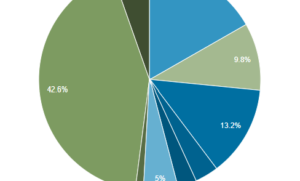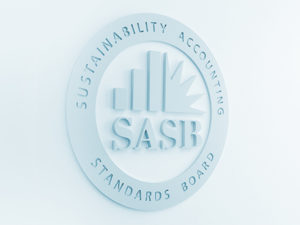
Matthew Welch President of SASB Foundation
Nearly five years ago, SASB released our first provisional reporting standard, the world’s first standard specifically for companies to communicate with investors on financially material sustainability topics. Since publishing that first provisional standard, we’ve consulted with companies and investors—hundreds of firms and thousands of individuals—to get feedback on the provisional standards and prepare the changes needed to issue the world’s first complete set of codified standards on financially material sustainability topics later this year.
During this process, we’ve learned many, many things from the market, but two important lessons will have a long-lasting impact on our activities:
Where a company discloses its sustainability data isn’t as important as the quality of that data.
There are many ways that companies communicate with their investors. While some companies choose to include SASB standards in their regulatory filings, other companies are sharing this data in other ways, like an online sustainability report or an annual report to shareholders.
What the market has told us is that regardless of where the information is disclosed, what’s most important is high quality, investor-grade data—and the governance and control environment around these disclosures should be similar to that used for traditional financial reporting.
Sustainability issues don’t have borders, and neither should our standards.
We have always believed that the SASB standards are relevant beyond US borders, because they are industry-based, not country-based. The material issues facing an industry in Germany or Japan are not fundamentally different from those in the US. SASB standards focus on sustainability information that is financially material—a fundamental concept important to investors and companies around the world. And there is hunger globally for our standards, which have been downloaded more than 122,000 times from across 38 countries; more than 50% of this interest comes from outside the USA.
However, we recognise that many stakeholders perceive SASB as solely focused on the US and our language over the years has supported that impression. We are working to change this perception and respond to growing global demand for and interest in SASB’s work.
So, what does this mean practically? Earlier this year, the SASB Foundation Board of Directors updated SASB’s strategic direction to reflect these two important lessons and better connect them to our daily work. We are busy recruiting for the newly formed SASB Sector Advisory Groups, which will help us actively solicit global market input. And our Standards Board will continue to actively consider the global applicability of the SASB standards. Later this fall, we will launch an updated website with language that supports our global outlook while making it easier for all stakeholders to find the information they need.
Earlier this year, SASB’s founder Dr. Jean Rogers wrote in this blog space that standard setting is a marathon, not a sprint. And with the codification of our standards just around the corner, I must admit it does feel like the finish line is in sight. But Jean also wisely wrote that codification marks a commencement, not merely an end. By taking these steps now and adapting to what the market has taught us, we should be well positioned for growing global interest in adopting SASB’s standards—our next marathon!

